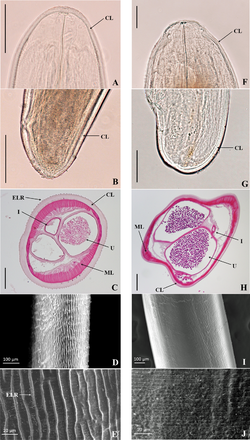| Dirofilariasis | |
|---|---|
 | |
| Comparison of probable Dirofilaria repens (left) and Dirofilaria immitis (right) | |
| Specialty | Infectious diseases |
Dirofilariasis is an infection by parasites of the genus Dirofilaria . [1] It is transmitted through a mosquito bite; its main hosts include dogs and wild canids. These can give rise to granulomas in the pulmonary artery. Some common symptoms include cough, fever and pleural effusion. It may also appear on X-rays of the chest. [2]